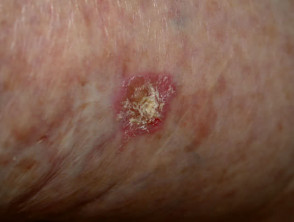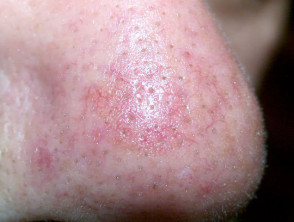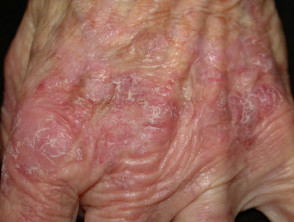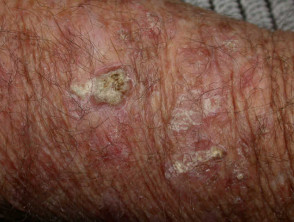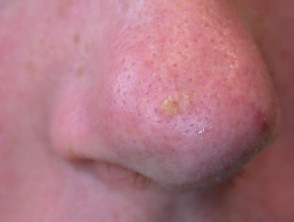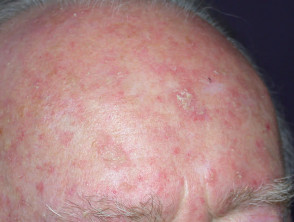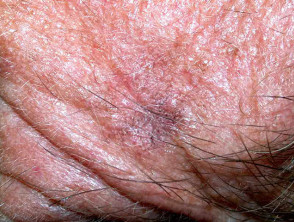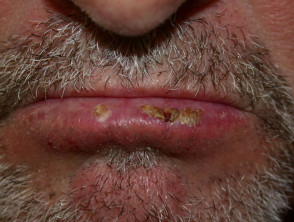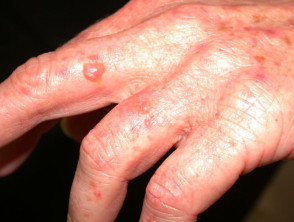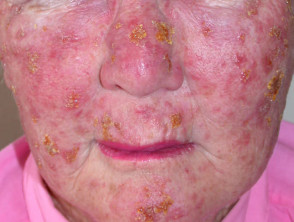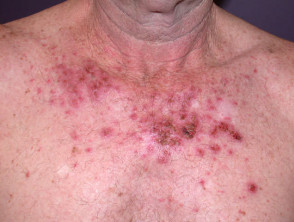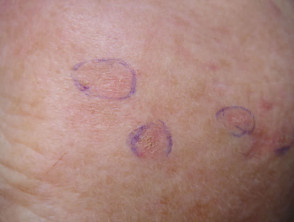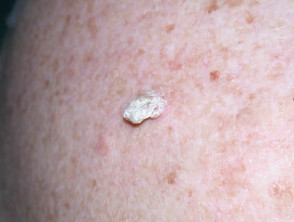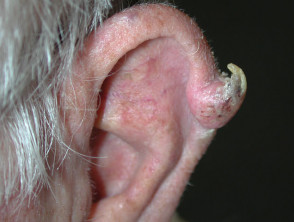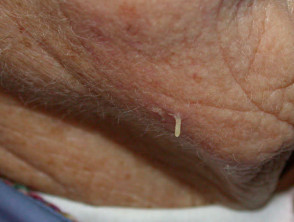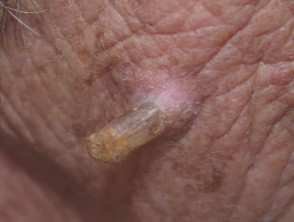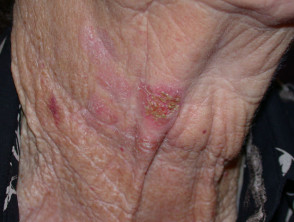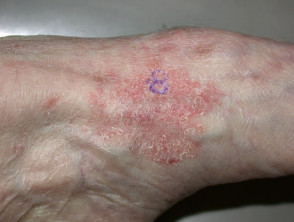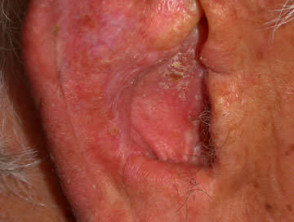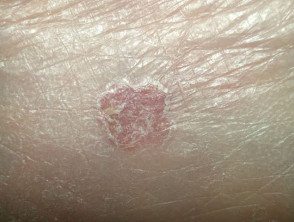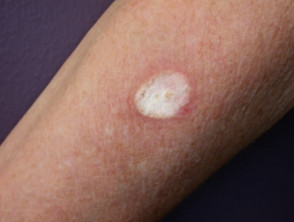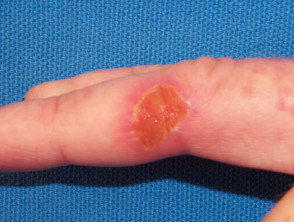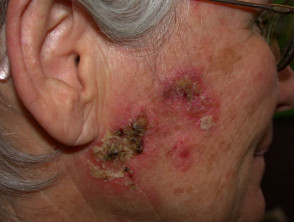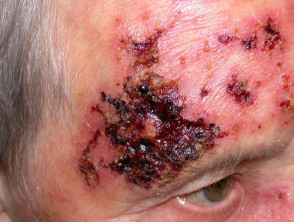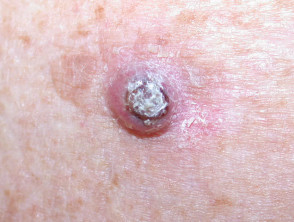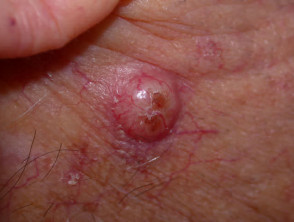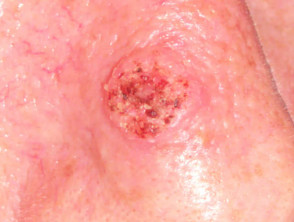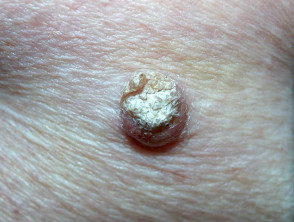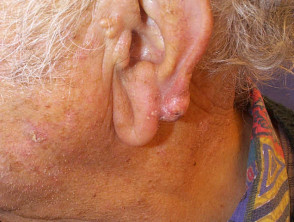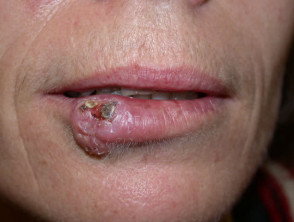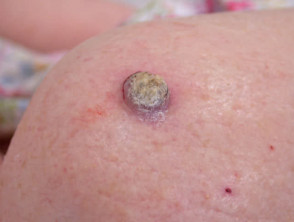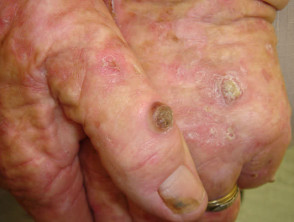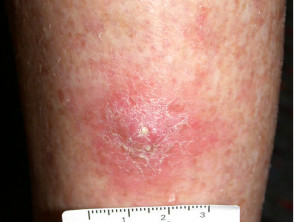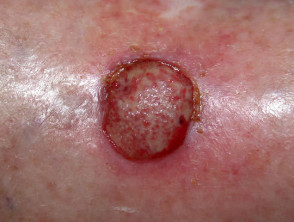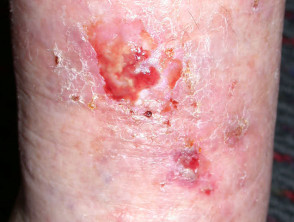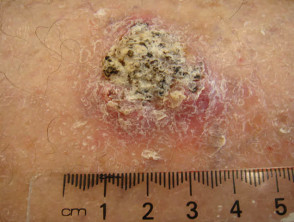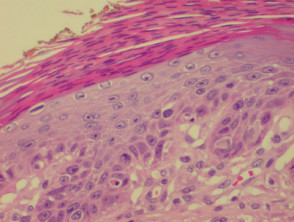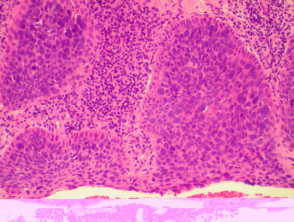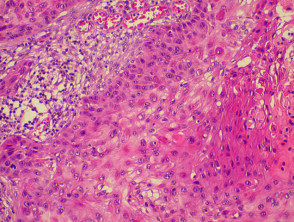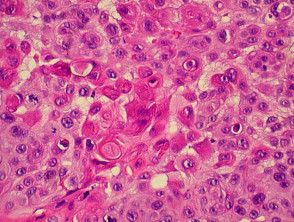DermNet provides Google Translate, a free machine translation service. Note that this may not provide an exact translation in all languages
Home Common skin lesions Squamous cell carcinoma CME
Common skin lesions
Squamous cell carcinoma CME
Created 2008.
Learning objectives
- Describe the clinical features and management of actinic keratoses, in situ and invasive squamous cell carcinoma
Introduction
This section discusses squamous cell carcinoma and its common precursor lesions, actinic keratoses.
About 50,000 new cases of non-melanoma skin cancer are estimated to occur in New Zealand each year – by far the most common of all cancers. There were 63 deaths in 1996. The majority of these had squamous cell carcinoma.
Actinic keratoses
The solar (actinic) keratosis is the most common precursor lesion for squamous cell carcinoma. Histologically, atypical keratinocytes are found in the basal layer of the epidermis.
Actinic keratoses are found on sun-exposed sites, mainly face, ears and hands. They are often multiple and have a hard scaly surface without induration (which would indicate dermal infiltration i.e. squamous cell carcinoma). The degree of scale and redness is variable, and the lesions frequently remit spontaneously.
Actinic keratoses on the lips are often referred to as ‘actinic cheilitis’; this term is also sometimes used to refer to an uncommon photosensitive dermatitis that affects the lips.
Actinic keratoses
Actinic keratoses are predominantly treated by cryotherapy. They may also be treated with the following:
- Keratolytic creams containing 10% urea, 2 to 4% salicylic acid or 10 to 15% lactic acid to reduce scaliness
- 2 to 4 weeks of 5-fluorouracil cream applied once or twice daily
- 4 to 16 weeks of imiquimod cream applied two or three times weekly
- Photodynamic therapy
- Ingenol mebutate gel applied for 2-3 days
- 3 months of topical diclofenac in hyaluran gel applied twice daily – this preparation is not available in New Zealand (June 2006).
Treatment of actinic keratoses
Cutaneous horn
Cutaneous horn is the name given to a solitary horny lesion; histologically these may be reported as hyperkeratotic actinic keratosis or well differentiated squamous cell carcinoma. They are treated by local shave, curette and cautery or excision.
Cutaneous horn
Squamous cell carcinoma in situ
Squamous cell carcinoma in situ usually presents as one or more slowly enlarging erythematous scaly plaques, known as Bowen's disease. Histologically, atypical keratinocytes are found throughout the epidermis without invasion through the basement membrane.
Bowen disease
Squamous cell carcinoma in situ may be treated surgically. Other treatments include cryotherapy, 5-fluorouracil cream, imiquimod cream or photodynamic therapy (PDT).
Treatment of Bowen's disease
Intraepithelial carcinoma affecting anogenital regions (penis, scrotum, vulva) is not discussed here.
Keratoacanthoma
Keratoacanthoma is a rapidly growing dome-shaped nodule with a keratinous core. These lesions may resolve spontaneously. However, they should usually be removed surgically by formal excision or shave, curettage and cautery as it is not possible to determine which lesions will resolve. Histologically, clinically diagnosed keratoacanthomas often prove to be well differentiated squamous cell carcinoma. A true keratocanthoma is characterised by a keratin-filled crater with well-differentiated keratinocytes extending over both sides of the crater like ‘lips’, and without dermal invasion.
Keratoacanthoma
Squamous cell carcinoma
Cutaneous invasive squamous cell carcinoma (SCC) generally arises within a actinic keratosis or within SCC in situ. Rarely, it arises within a thermal burn or chronic skin disease such as discoid lupus erythematosus. Lip cancer predominantly affects the lower lip. It particularly occurs in males chronically exposed to the sun and is more frequent in smokers.
SCC presents as an irregular keratinous nodule or a firm erythematous plaque, and frequently ulcerates. Histologically, atypical keratinocytes proliferate within the dermis.
Metastatic disease is uncommon. There were 86 deaths from non-melanoma skin cancer registered in New Zealand in 2000; most of these were SCC.
Squamous cell carcinoma
Invasive SCC is nearly always treated surgically. Wide margins are advisable for poorly differentiated or anaplastic tumours. Some tumours are treated by radiotherapy, particularly when surgery is difficult or incomplete.
Malignant follicular tumours are considered equivalent to low-grade squamous cell carcinomas. Sebaceous carcinoma is most often seen around the eyelid but may occur elsewhere on head, neck or trunk. They are variably differentiated and have significant metastatic potential. Adnexal carcinomas with tubular and ductular differentiation (adnexal adenocarcinomas) are relatively uncommon. They often arise within a benign adnexal lesion. There are various subtypes, and they generally have low risk of metastasis.
Histology
The histological characteristics of keratinocytic tumours are illustrated below.
Activity
What are published recurrence rates for actinic keratoses treated by different modalities? Discuss the evidence for the effectiveness of sunscreens in the management of actinic keratoses.
Related information
References
- Clinical Guidelines, including actinic keratoses, Bowen's disease and squamous cell carcinoma – British Association of Dermatologists
- Chia A, Moreno G, Lim A, Shumack S. Actinic keratoses. Aust Fam Physician. 2007 Jul;36(7):539-43. Review.
- Stulberg DL, Crandell B, Fawcett RS. Diagnosis and Treatment of Basal Cell and Squamous Cell Carcinomas. Am Fam Physician. 2004 Oct 15;70(8):1481-8.
On DermNet NZ
Information for patients
Other websites
- Emedicine Dermatology ; Hess. SD. Squamous Cell Carcinoma.
- Clinical evidence (BMJ): Squamous cell carcinoma of the skin (non-metastatic)
Books about skin diseases
See the DermNet NZ bookstore.
Sign up to the newsletter
© 2024 DermNet.
DermNet does not provide an online consultation service. If you have any concerns with your skin or its treatment, see a dermatologist for advice.
